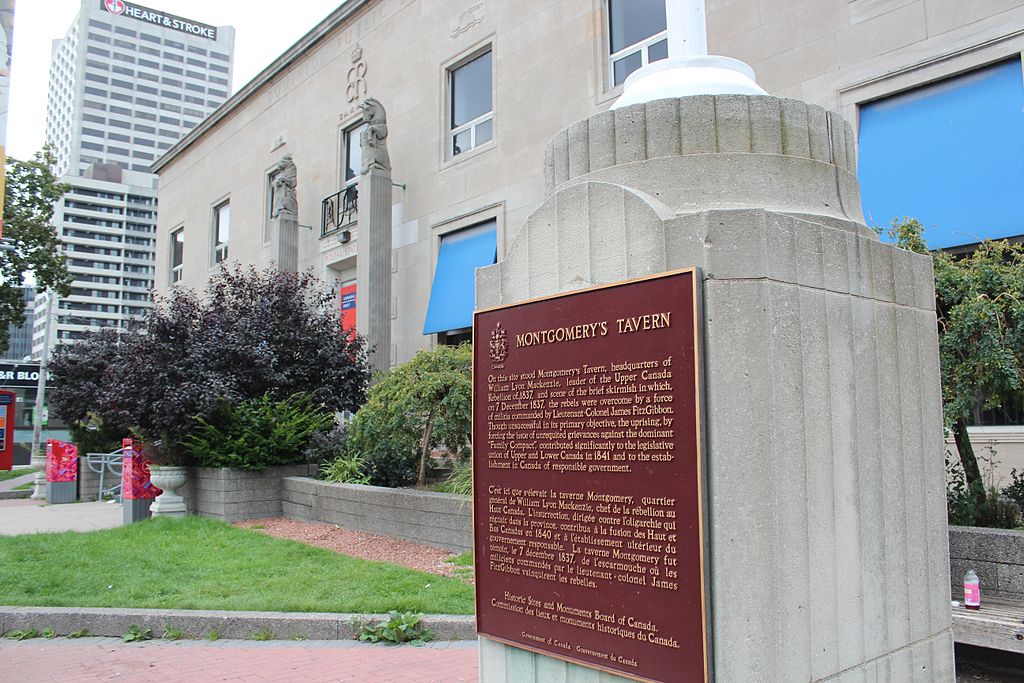Browse "Things"
-
Macleans
Olympic Hockey Meltdown
Instead, the glory went to players like Pavel Bure, the Russian rocketeer with a sweet scoring touch, and Dominik Hasek, the Czech goaltender built like a slab of the old Berlin Wall - with Cold War-era impenetrability.This article was originally published in Maclean's Magazine on March 2, 1998
"https://d2ttikhf7xbzbs.cloudfront.net/media/media/45ac1e26-8b95-472a-8812-c5a320ab16e7.jpg" // resources/views/front/categories/view.blade.php
https://d2ttikhf7xbzbs.cloudfront.net/media/media/45ac1e26-8b95-472a-8812-c5a320ab16e7.jpg
-
Article
Music at the Olympics
Organized athletic contests originally held in ancient Greece to celebrate an Olympiad (a period of four years), and revived in Athens in 1896. The running of the modern Olympics is controlled by the International Olympics Committee (IOC).
"https://development.thecanadianencyclopedia.ca/images/tce_placeholder.jpg?v=e9dca980c9bdb3aa11e832e7ea94f5d9" // resources/views/front/categories/view.blade.php
https://development.thecanadianencyclopedia.ca/images/tce_placeholder.jpg?v=e9dca980c9bdb3aa11e832e7ea94f5d9
-
Article
Omar Khadr Case
Omar Khadr is a Toronto-born Canadian, captured by American soldiers after a firefight in Afghanistan in 2002, when he was 15 years old. The only minor since the Second World War to be convicted of purported war crimes, Khadr was imprisoned in Guantanamo Bay and Canada for almost 13 years in total. In 2010, the Supreme Court of Canada ruled that Khadr’s detainment violated “the principles of fundamental justice” and “the most basic Canadian standards about the treatment of youth suspects.” Despite repeated attempts by the Canadian government to keep him in prison, Khadr was released on bail in May 2015. In July 2017, he received $10.5 million in compensation from the government for Canada’s role in violating his constitutional rights. In March 2019, an Alberta judge declared that Khadr had completed his war crimes sentence, making him a free man.
"https://d2ttikhf7xbzbs.cloudfront.net/media/media/c88822b2-002f-4f23-aa99-62868850f1ac.jpg" // resources/views/front/categories/view.blade.php
https://d2ttikhf7xbzbs.cloudfront.net/media/media/c88822b2-002f-4f23-aa99-62868850f1ac.jpg
-
Article
Ombudsman
An ombudsman is an independent officer of the legislature who investigates complaints from the public against administrative action and, if finding the action unfair, recommends a remedy.
"https://development.thecanadianencyclopedia.ca/images/tce_placeholder.jpg?v=e9dca980c9bdb3aa11e832e7ea94f5d9" // resources/views/front/categories/view.blade.php
https://development.thecanadianencyclopedia.ca/images/tce_placeholder.jpg?v=e9dca980c9bdb3aa11e832e7ea94f5d9
-
Article
On to Ottawa Trek and Regina Riot
In April 1935, about 1,500 residents of federal Unemployment Relief Camps in British Columbia went on strike. They travelled by train and truck to Vancouver to protest poor conditions in the Depression-era camps. After their months-long protest proved futile, they decided to take their fight to Ottawa. On 3 June, more than 1,000 strikers began travelling across the country, riding atop railcars. By the time they reached Regina, they were 2,000 strong. But they were stopped in Regina, where the strike leaders were arrested, resulting in the violent Regina Riot on 1 July 1935.
"https://d2ttikhf7xbzbs.cloudfront.net/media/media/296df678-f18c-47a4-91d9-02e0c8aad009.jpg" // resources/views/front/categories/view.blade.php
https://d2ttikhf7xbzbs.cloudfront.net/media/media/296df678-f18c-47a4-91d9-02e0c8aad009.jpg
-
Macleans
On to Ottawa Trek/Regina Riot
This article was originally published in Maclean’s magazine on July 1, 2002. Partner content is not updated. Pulling down the bill of his hat, Jack Geddes squinted against the Prairie wind. Perched atop the boxcar of a moving train, Geddes could just make out the Alberta foothills. Beyond them, through the thick, black smoke belching from the steam engine, lay the snow-capped Rockies.
"https://development.thecanadianencyclopedia.ca/images/tce_placeholder.jpg?v=e9dca980c9bdb3aa11e832e7ea94f5d9" // resources/views/front/categories/view.blade.php
https://development.thecanadianencyclopedia.ca/images/tce_placeholder.jpg?v=e9dca980c9bdb3aa11e832e7ea94f5d9
-
Article
One Big Union
The One Big Union (OBU) was a radical labour union formed in Western Canada in 1919. It aimed to empower workers through mass organization along industrial lines. The OBU met fierce opposition from other parts of the labour movement, the federal government, employers and the press. Nevertheless, it helped transform the role of unions in Canada. Click here for definitions of key terms used in this article.
"https://d2ttikhf7xbzbs.cloudfront.net/media/new_article_images/OneBigUnion/OBU_logo.JPG" // resources/views/front/categories/view.blade.php
https://d2ttikhf7xbzbs.cloudfront.net/media/new_article_images/OneBigUnion/OBU_logo.JPG -
Macleans
One dirty hand washes the other
The slow and painful process of cleaning up a culture of corruptionThis article was originally published in Maclean's Magazine on July 15, 2013
"https://development.thecanadianencyclopedia.ca/images/tce_placeholder.jpg?v=e9dca980c9bdb3aa11e832e7ea94f5d9" // resources/views/front/categories/view.blade.php
https://development.thecanadianencyclopedia.ca/images/tce_placeholder.jpg?v=e9dca980c9bdb3aa11e832e7ea94f5d9
-
Editorial
Canadian Soldiers and the Liberation of the Netherlands
In the final months of the Second World War, Canadians were tasked with liberating the Netherlands from Nazi occupation. In April 1945, the First Canadian Army began clearing the northern and western Netherlands, where many had suffered from food and fuel shortages in what became known as the “Hunger Winter.” Over 1,000 Canadian servicemen died in April 1945 during the last push to liberate the country. The Dutch people greeted their Canadian liberators with cheers and gratitude and continue to honour their sacrifice today.
"https://d2ttikhf7xbzbs.cloudfront.net/media/new_article_images/LiberationNetherlands/Tank in Putten.jpg" // resources/views/front/categories/view.blade.php
https://d2ttikhf7xbzbs.cloudfront.net/media/new_article_images/LiberationNetherlands/Tank in Putten.jpg
-
Macleans
One Step From Death
Dozens of people who were inside Elliot Lake’s doomed mall are haunted by close calls, fateful decisions and countless ‘what-ifs’This article was originally published in Maclean's Magazine on July 8, 2013
"https://development.thecanadianencyclopedia.ca/images/tce_placeholder.jpg?v=e9dca980c9bdb3aa11e832e7ea94f5d9" // resources/views/front/categories/view.blade.php
https://development.thecanadianencyclopedia.ca/images/tce_placeholder.jpg?v=e9dca980c9bdb3aa11e832e7ea94f5d9
-
Article
Onion
The onion (Allium cepa), is a biennial, herbaceous plant of the Amaryllidaceae family. It is Canada's most important condiment crop. (Multiplier Onion) and A.
"https://d2ttikhf7xbzbs.cloudfront.net/media/media/21845109-8105-4ea3-a368-aae28d173cd0.jpg" // resources/views/front/categories/view.blade.php
https://d2ttikhf7xbzbs.cloudfront.net/media/media/21845109-8105-4ea3-a368-aae28d173cd0.jpg
-
Article
Ontario and Confederation
Ontario became one of the founding members of the Dominion of Canada on 1 July 1867 when it joined New Brunswick, Nova Scotia and Québec in Confederation.
"https://d2ttikhf7xbzbs.cloudfront.net/media/media/41cdeb8a-0c08-457b-b7dc-3c9e2d78a7ce.jpg" // resources/views/front/categories/view.blade.php
https://d2ttikhf7xbzbs.cloudfront.net/media/media/41cdeb8a-0c08-457b-b7dc-3c9e2d78a7ce.jpg
-
Article
Ontario Hydro
Ontario Hydro was a Crown corporation owned by the Ontario government until it was privatized in 1999.
"https://d2ttikhf7xbzbs.cloudfront.net/media/media/4c2c080b-2319-41db-bfdd-da332a9d805d.jpg" // resources/views/front/categories/view.blade.php
https://d2ttikhf7xbzbs.cloudfront.net/media/media/4c2c080b-2319-41db-bfdd-da332a9d805d.jpg
-
Macleans
Ontario Hydro Meltdown
This article was originally published in Maclean’s magazine on August 25, 1997. Partner content is not updated. Carl Andognini gives his diamond pinky ring a fiddle and offers a thin smile. A very thin smile. He has just come from yet another meeting with a crowd of ONTARIO HYDRO staffers in the mega-corporations mirrored headquarters in downtown Toronto.
"https://development.thecanadianencyclopedia.ca/images/tce_placeholder.jpg?v=e9dca980c9bdb3aa11e832e7ea94f5d9" // resources/views/front/categories/view.blade.php
https://development.thecanadianencyclopedia.ca/images/tce_placeholder.jpg?v=e9dca980c9bdb3aa11e832e7ea94f5d9
-
Macleans
Ontario Hydro to be Privatized
This article was originally published in Maclean’s magazine on February 12, 1996. Partner content is not updated.
"https://d2ttikhf7xbzbs.cloudfront.net/media/media/4c2c080b-2319-41db-bfdd-da332a9d805d.jpg" // resources/views/front/categories/view.blade.php
https://d2ttikhf7xbzbs.cloudfront.net/media/media/4c2c080b-2319-41db-bfdd-da332a9d805d.jpg

